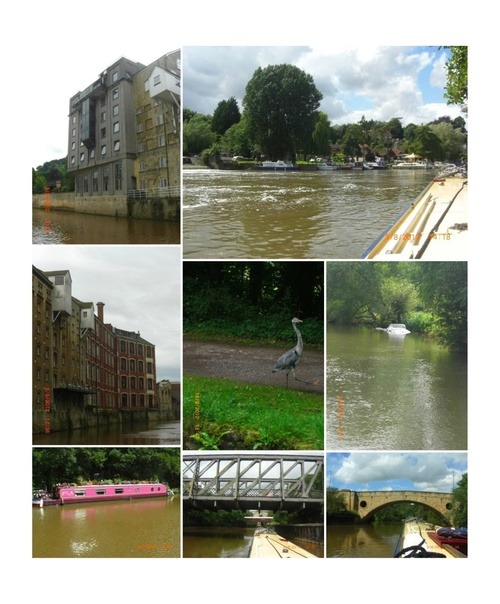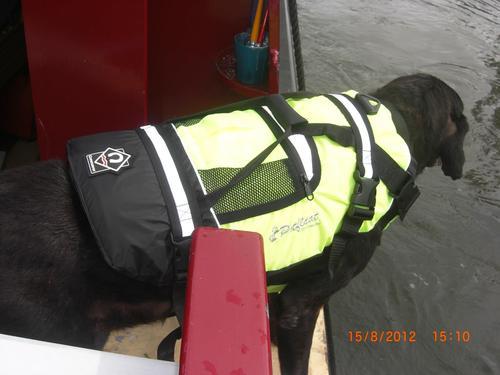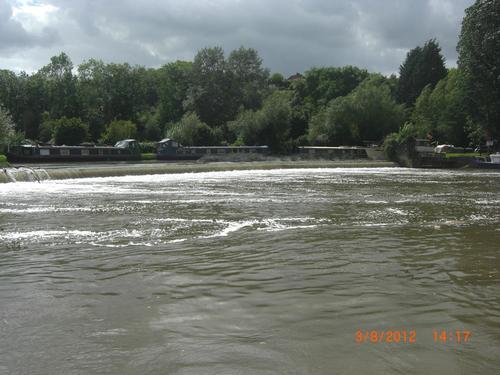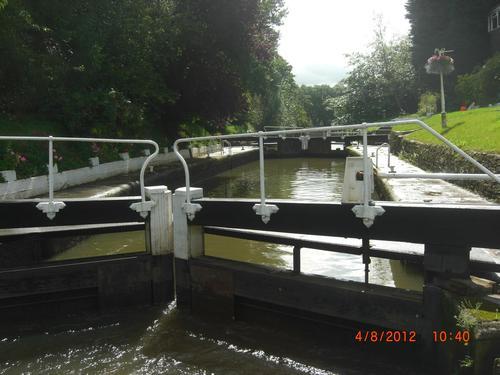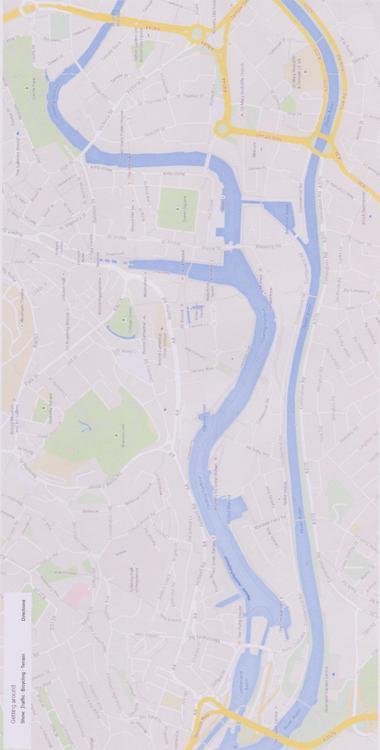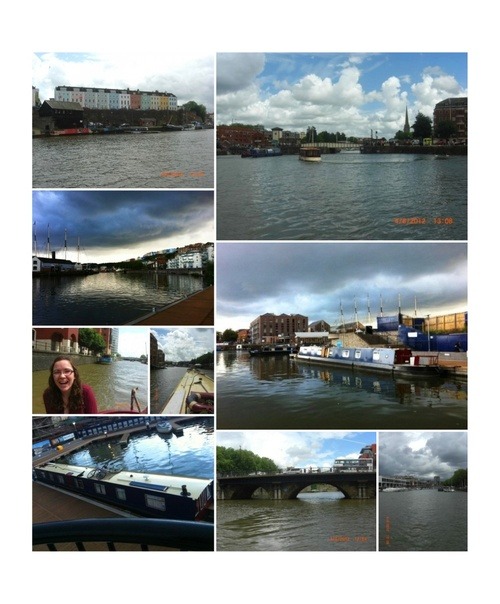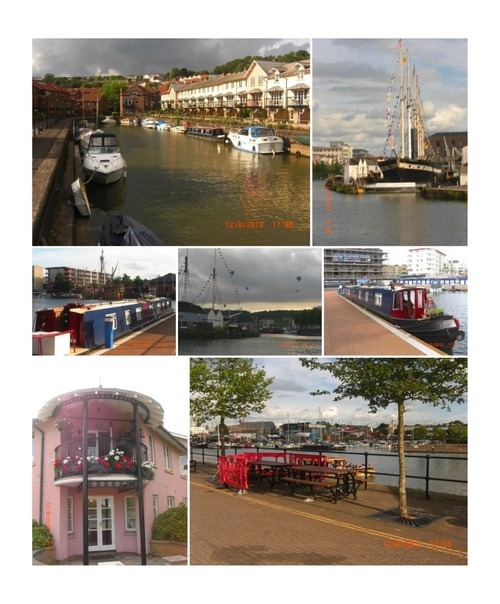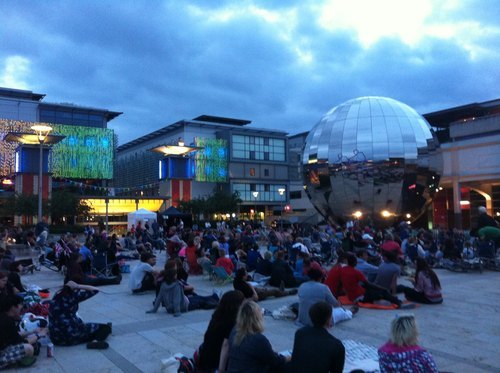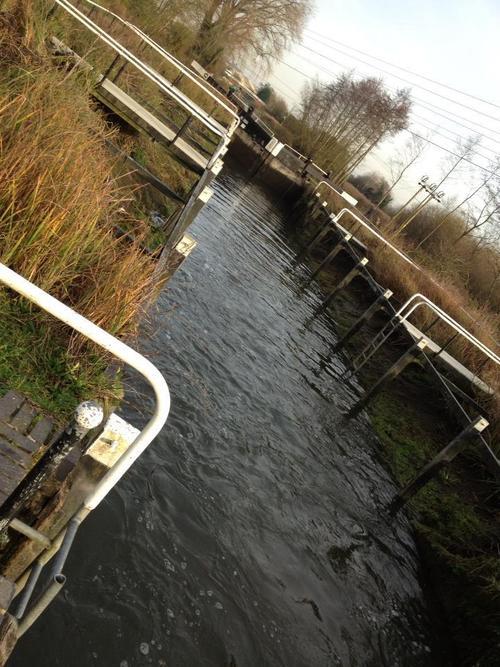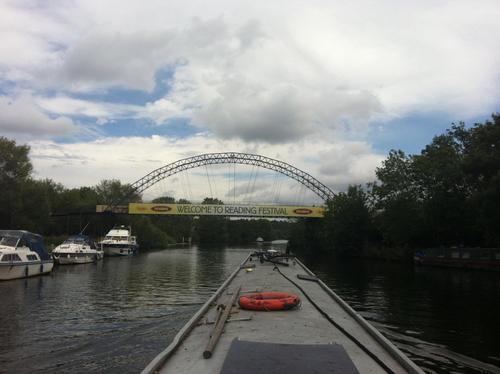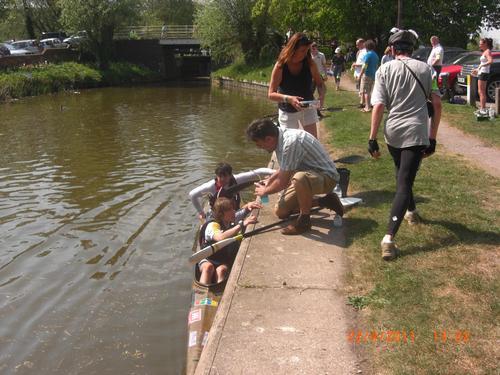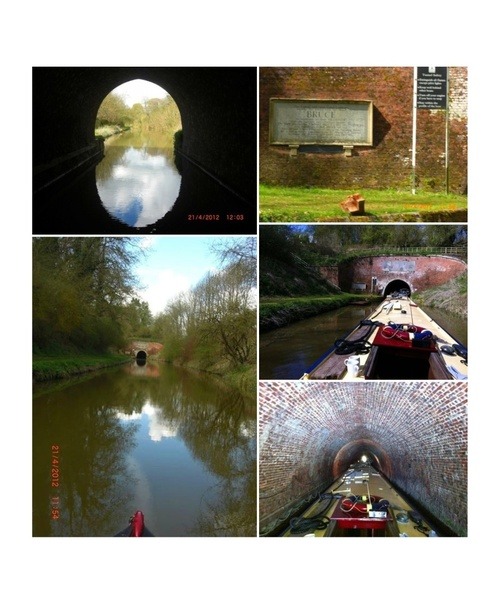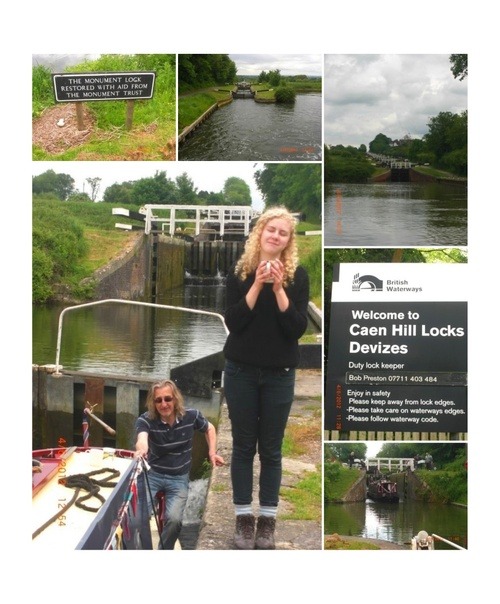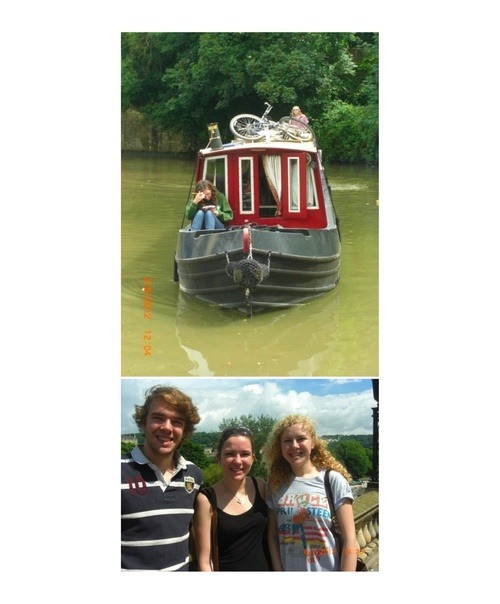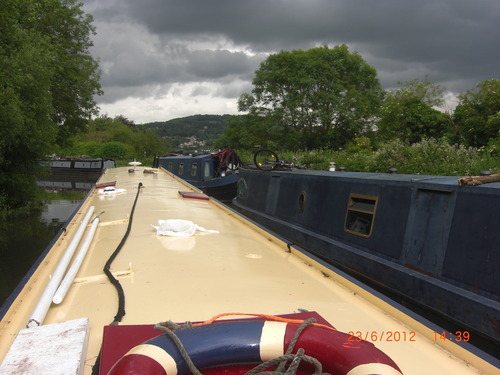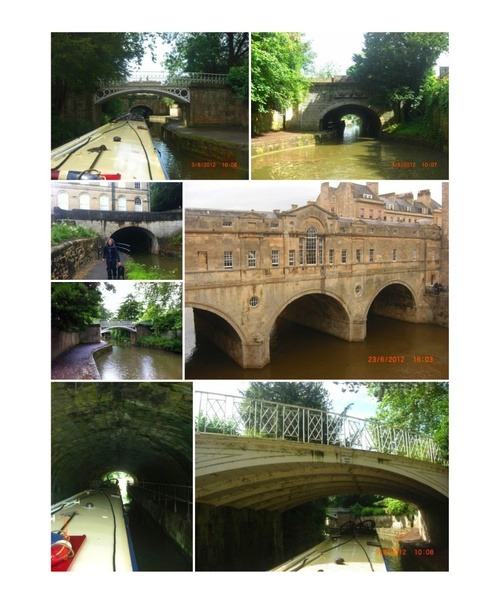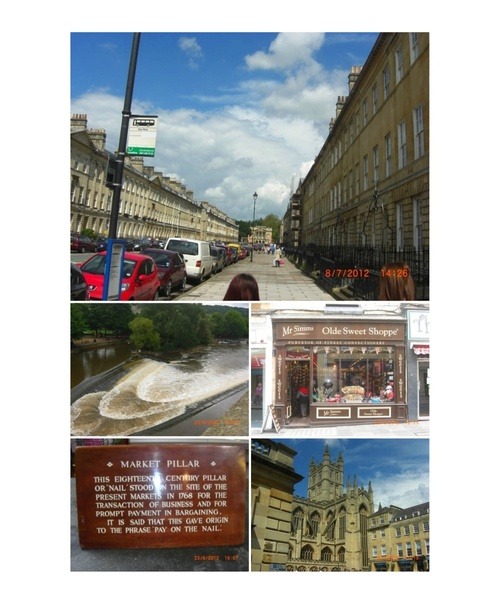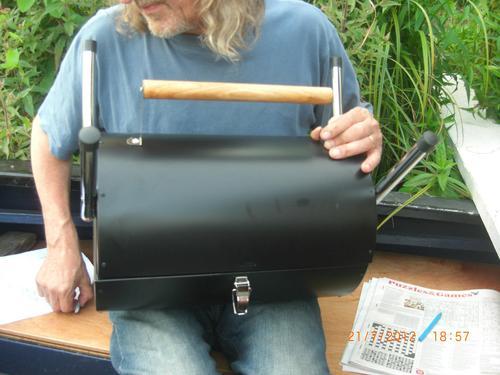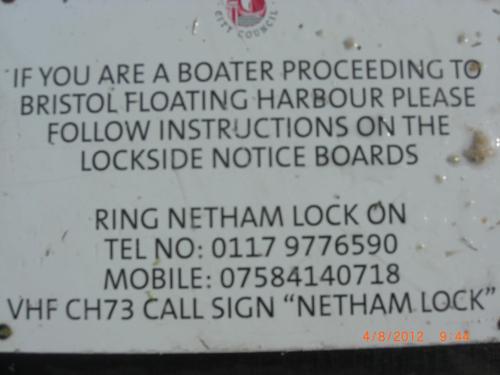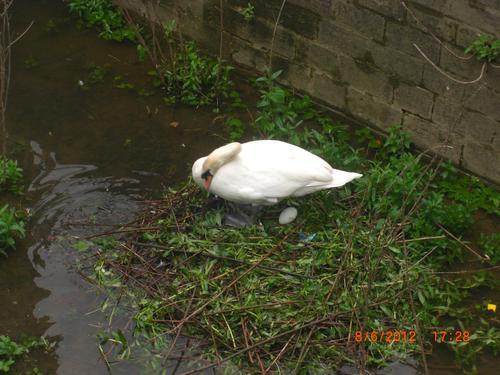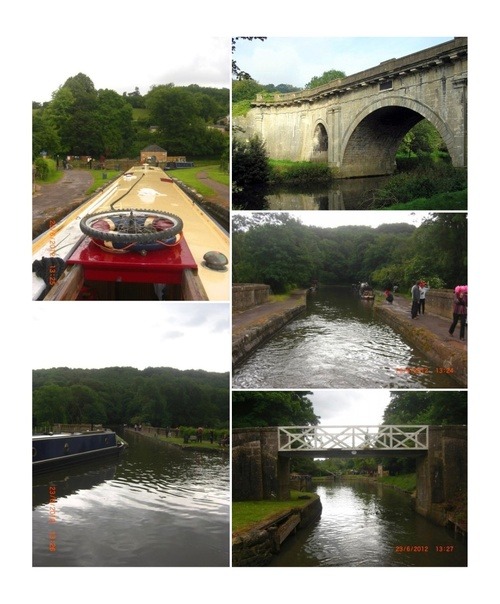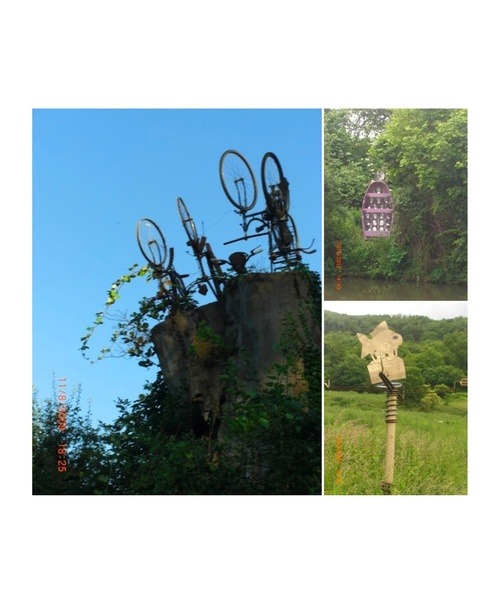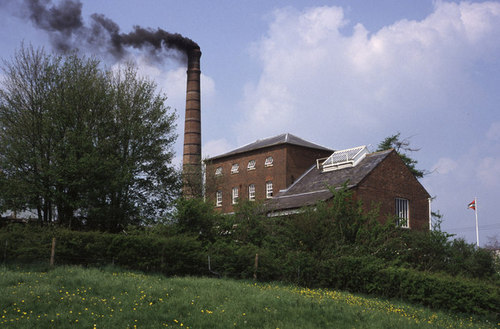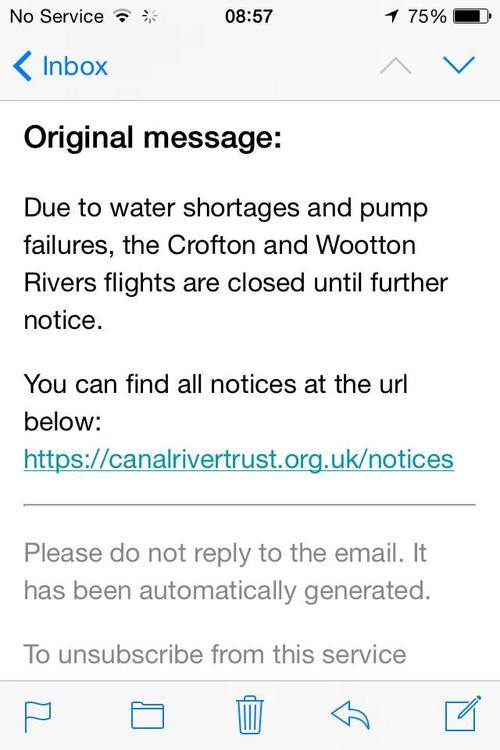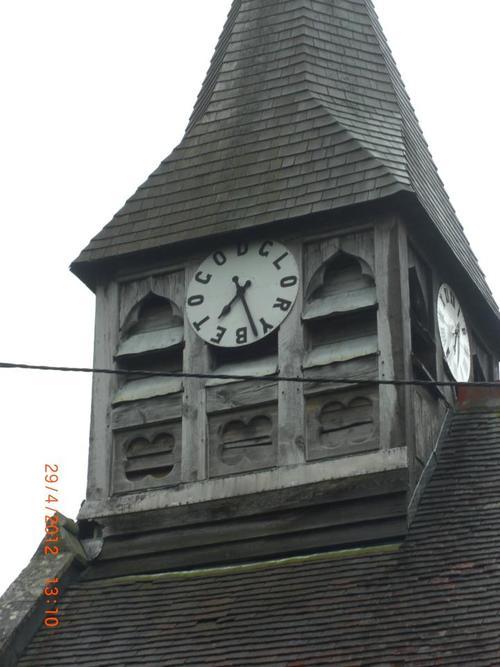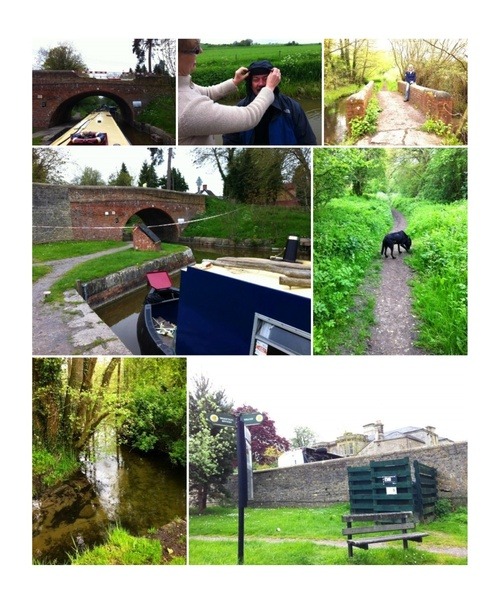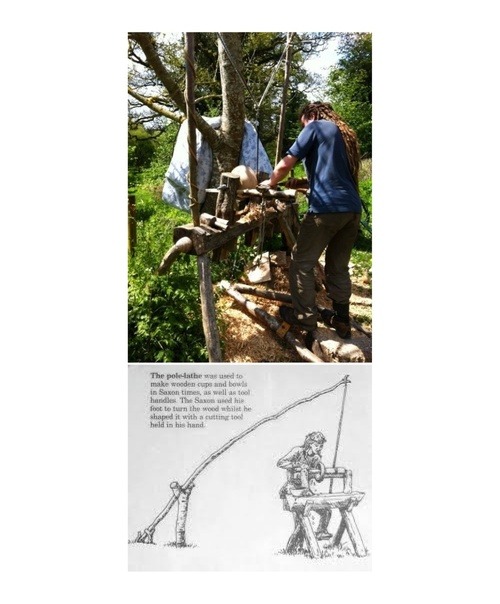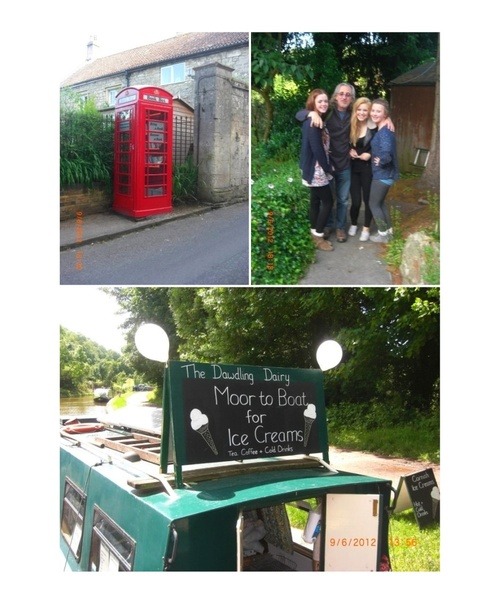The River Avon from Bath to Bristol
The final stretch to Bristol is on the River Avon. We were a bit
nervous about this trip as there had been a lot of rain that summer and
we had been getting email alerts every so often when the river was
closed for a day or more at a time. When it gets too high it becomes
too dangerous for inland craft to use and the locks are padlocked up.
Many of the old wharves in Bath had been converted to yuppie apartments as in many river./canal towns around the country.
It was our first time on tidal waters so it gave Diesel a chance to wear his life jacket.
Some of the permanent moorings looked a bit precarious, especially these next to a weir.
We saw more kingfishers per mile than we ever had anywhere else. At
times it felt that they were the most common bird on the river. I have
yet to get a close up picture of a kingfisher but will do one day. We
had left the boat for two weeks at Bathampton in July. We returned on a
lovely sunny Friday evening and were having a glass of wine on the
front deck. Suddenly a kingfisher alighted on the mooring line no more
than four feet away from us. We had noticed that they use mooring lines
as fishing perches and this one had obviously got used to the boat
being empty. There was no way I could get a picture as the first
movement we made would scare it off. I will never forget the image of
being that close to such a beautiful bird though.
Locks on the River Avon
The locks on the Avon were larger than on the canals but not as large
as those on the River Thames. Like the majority of those on the canals
they were all manually operated.
Hanham lock
This was the last lock before Bristol and you have to call the
Bristol harbourmaster to get permission to leave the lock and continue
downstream . We had to wait an hour for the tide to rise before we were
allowed to go through. As you can see the river is same height both
sides of the lock.
After three more miles we finally saw the sign that said we were at the harbour.
Entering and nosing round Bristol harbour
Bristol harbour felt massive and far larger than any basin we had
been in before. There were no worries about finding places to turn. We
had a good cruise around before finding where we wanted to moor. The
harbour is 2 1/2 miles long so there were plenty of places to moor. We
went to the dock by the Watershed first but then realised that it would
be incredibly noisy at night because of the bars and restaurants. It
transpired we were right as whenever we walked down there it was full of
hen and stag parties so we nicknamed it ‘Hen alley’.
We ended up on new pontoons opposite the SS Great Britain down near
the western end of the harbour. It was nice and quiet and hardly any
other boats moored there whilst we stayed there. The weather was still
pretty miserable as it was most of the 2012 summer.
Around the harbour
We stayed in the harbour for three weeks whilst waiting for the
weather to improve. We needed calm conditions before we could hire a
pilot to take us out to Sharpness and up the River Severn to
Gloucester.
It would have been a fantastic journey going up the Severn,
especially under the two M4 bridges. We had discussions with the
pilots’ office every day but the weather was never settled enough. In
the end we had to agree to try another year and head back east to
Reading. It was also getting very expensive paying mooring fees in the
harbour. I suspect we will end up doing it in the opposite direction
one day when we have toured the north and are heading back down south
through Stratford to Gloucester.
Our final evening in the harbour coincided with the closing ceremony
of the 2012 Olympics and, ironically, it was a lovely warm evening and
the squares with outside screens were packed.
Logistics
We gave up our moorings at Newbury on October 1st 2011 and started
continuously cruising. As we were both working this generally meant
every other weekend was spent like this:
- Friday evening - drive to boat and visit pub
- Saturday - cruise to next place where boat could be left for two weeks
- Sunday - walk back to get car and drive home
Deciding where to leave the boat entailed using a map to find a
likely spot near a road bridge and a pub (for that Friday drink). Then a
look at the satellite view on a PC to make sure there would be places
to park the car and moor the boat.
The only drawback to this approach was that we had to cruise on a
Saturday whatever the weather. But providing we were dressed for the
occasion it didn’t matter, especially if we had the slow cooker going
for an evening meal. Sometimes it meant cycling or walking back to the
car in the rain. I remember one day when we cycled and the bikes were
absolutely filthy so I dunked them in the canal before putting them in
the car. A lady walking her dog said she wasn’t surprised that I found
bikes in the canal but wondered how I knew they were there!
Off to Reading
We fancied going to visit Oxford so we headed east to the end of the
Kennet & Avon canal (the K&A) at Reading where we could then
pick up the Thames to Oxford.
On the way down to Reading we went through Monkey Marsh lock which is
one of only two turf sided locks in the country. A guy in an old suit
walks from Thatcham to this lock nearly every day and sits inside a pill
box next to the lock until a boat comes along (The K&A has pill
boxes along its length - no idea why we thought the invading Germans
would use a canal). When a boat comes the guy gets out of the box to
operate the lock. I never managed to get him to talk but he obviously
feels the lock is his - we refer to him as Monkey Marsh Man.
The K&A cuts through the centre of the Oracle shopping centre in
Reading but they have not made much of it. Unlike Birmingham and other
towns you are not allowed to moor up and the canal is very much kept at
arms length. It even has traffic lights to enforce one way traffic
through the centre.
The Thames & Oxford
Our canal licence doesn’t cover us for using the Thames so there is a
daily charge to use the river. The charge varies according to the
length of the boat and as it was going to cost us £40 a day we didn’t
really want to hang around for long.
It was quite an experience going on the Thames. The locks were
operated by lock keepers and they directed the boats into the locks
which are large and can accommodate far more boats than canal locks. It
was fun sharing locks with the plastic gin palaces - just looking at
their faces, frightened our big steel boat would crush them, was
entertaining. The locks all had well tended gardens and the lock
keepers were very friendly. Unfortunately, in 2013, the Environment
Agency announced that they were to make the majority of the lock keepers
redundant and replace them with voluntary staff.
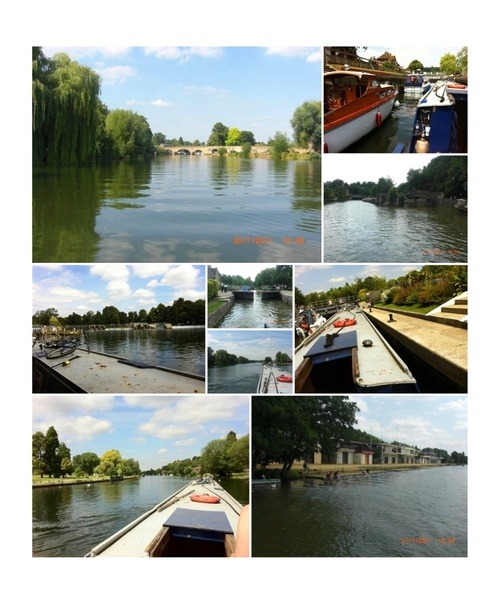
We turned right off the Thames at Oxford to go down a narrow cut to
the Oxford canal. On the cut we passed an old railway swing bridge -
health and safety wouldn’t allow such a thing these days. Around a
tight left hand bend we saw the entrance to the Oxford, the first lock
and how narrow it seemed compared with the Thames’ locks. We left the
boat in Jericho for a couple of weeks and spent time visiting Oxford.
Lauren was studying at Oxford Brookes at the time and working in
Boswell’s. Like a lot of towns many people are not aware there is a
canal passing through; the Oxford canal starts at the back of the rail
station and runs north through Jericho. It is our favourite canal to
date, the single width locks mean there are no wide craft and it passes
some really rural areas on its way to Coventry.

We then decided we would like to get down to Bristol and up the river
Severn to Gloucester before the end of the summer so we headed back
south to Reading to travel the length of the Kennet & Avon to
Bristol.
Back to Reading and west to Devizes (Queen’s Diamond Jubilee)
On our way back to Reading we saw that preparations had already started for Reading festival even though it was only April.
On our way through Hungerford we spent some time with our friends
Sharon and Simon who were helping out on the annual Devizes to
Westminster canoe race. Here they are with their son, Robin, who is in
the back.
At the summit of the K&A is Bruce’s tunnel, our first canal
tunnel. The shot taken inside was with a flash so it’s not really that
bright - the light from the headlight can be seen at the front.
As it was the Queen’s Diamond Jubilee we cut out cloth triangles and
Karen painstakingly sewed them to form a 150’ long bunting to adorn the
boat.
This was about the time we got to Devizes and its famous Caen Hill
locks; 29 in two miles with 16 in close succession. It takes a good few
hours to do these and fortunately Karen had Jo to help her as we locked
down. Jo looked like she needed that mug of tea I had made her as we
neared the bottom.
Next we headed for Bath on our way to Bristol…
The
next stop on on our way to Bristol was in Bath. Matthew, Catherine and
Joanna joined us for a weekend and Catherine was reminded that studying
is still required even when she was away from uni.
Bath has one of the largest communities of liveaboard boaters outside
of London. Consequently it can be very difficult to find moorings
unless you get right into the city where the moorings are 24 or 48 hour
only.
The canal architecture is ornate as it passes through Bath.
We spent quite a bit of time wandering around Bath but, as usual, didn’t seem to take many pictures.
More proof of my cackhandedness appeared again when we were moored in
Bath when I assembled a barbecue for use on the towpath. It was only
when I finished that I realised I had put the handle on the base.
There is a flight of six locks in the middle of Bath taking the canal
down to meet the River Avon. The penultimate lock is the second
deepest in the country with a drop of 19’ 5”, about three times deeper
than the average lock. As you can imagine the gates are massive and
Karen could not move them on her own. Fortunately there is a road
bridge crossing the end of the lock and some white ‘venmen’ saw her
struggling and stopped in the road and leapt over the fence to help her.
Leaving the last lock at Bath we joined the River Avon and this sign told us we were on the last leg to Bristol.
Next trip, Bristol harbour…
Bradford-on-Avon
Continuing our travels westwards on the Kennet and Avon canal (K&A) we went through pretty Bradford-on-Avon:
Looking down from the bridge crossing the River Avon we saw this swan
on her nest and got talking to a local lady who was also watching it.
She told us that the swan’s previous nest had been washed away by the
swollen river two weeks earlier. The silly thing (the swan) had built
the new nest in the same spot! She (the local lady) also explained that
she spent as much time on the bridge as possible as she had previously
chased some young yobs who were throwing stones at the nest. By the
time we came back through Bradford-on-Avon the nest was empty so we
never found out whether the swan was successful.
Aqueducts
There are two major aqueducts on the K&A and they are both in
this area. They were both built to cross the River Avon from one side
of the valley to the other.
First we came to Avoncliffe aqueduct. We found the turns a bit tight
when we hired a boat here years ago and grounded the boat in front of a
crowd of tourists but were OK this time round. There is a nice old
micro brewery pub just off the aqueduct. The banks along here are full
of wild garlic; the smell is wonderful at the right time of year. It is
the leaves from this plant that are used in cooking so we made sure we
took what we needed for the next few days.
Dundas aqueduct was next. This is a honey pot for tourists; the old
Somersetshire Coal canal joins at the aqueduct and has a rowing boat
hire centre and cafes.
Strange art/sculptures
Well, they were strange to us. I’m sure artists find them normal.
There were several of these pieces between Bradford-on-Avon and Bath.
Here are three that we managed to photograph.
Pumping stations
After Dundas aqueduct we went past Claverton pumping station.
Pumping stations were built at the same time as the canals and were/are
used to pump water up to the higher levels. The highest level on a canal
is known as the summit level. The summit level on the K&A is 15
miles long, i.e. 15 miles without a lock. The stretches between locks
are called pounds.

Many pumping stations are open to the public and are fascinating to
visit. We had spent some time at Crofton pumping station (just west of
Hungerford). They say it is the oldest steam beam engine in the world
that still works and is still in its original building. I suppose they
mean not restored and rebuilt in a museum. It was here that we had the
clever idea of pressure washing the boat. Unfortunately the water
pressure at the water point was not high enough to get the pressure pump
working. Still, it provided a good spectacle for the visitors to the
pumping station who had wandered down to the canal for picnics or to
gongoozle. Here is a link to an informative video about the Crofton beam engines.
As regular canal travellers we get email alerts of breakdowns,
blockages and stoppages etc. to help us plan our journeys.
Coincidentally I received this one yesterday; it would have been a bit
frustrating if we were travelling through that area at the moment.
Devizes (where all the pubs sell 6X)
We spent a few nights in Devizes and found some quaint places. My
eldest sons Chris and Steve came down for a weekend to help with odd
jobs on the boat and enjoy a bit of cruising. I seem to remember that
the Saturday evening was one of those where it seems a great idea to
crack open the port.
Wootton Rivers
Unusual dial on this church clock at Wootton Rivers.
Pewsey
Our good friends, John & Heather, joined us at Pewsey for a long
weekend. We had an unfortunate start on the Saturday morning. Whilst
filling up with water at Pewsey Wharf we heard a massive bang/crash and a
white van had hit the side of the canal bridge and flipped over
completely blocking the road. As some of the bridge coping stones had
been displaced the police put tape across the canal to stop us
travelling until structural engineers arrived and passed it safe. It
was OK as there was a pub on the wharf right next to where we were
moored and we weren’t driving anywhere. When the engineers arrived they
just pushed the loose stones into the canal and we were on our way.
Would have made the repairers’ job more difficult as they would have had
to retrieve the stones first.
We eventually got through and had a pleasant weekend cruising, albeit
in a lot of rain, down to a place called Horton. I believe we had
another ‘good idea for port’ nights on the Saturday. As we had two cars
between us we had already stationed one car at the the Bridge inn in
Horton to make it easy to go back for the other car once we finished
cruising. When we arrived we couldn’t find the key to the car at the
Bridge inn so John and I had to cycle back to his car at Pewsey in the
hope we had dropped the keys in his car on on the canal side. Karen and
Heather took refuge in the pub of course. It was rather a long cycle as
we had cruised a long way assuming we would be using the cars, All was
OK in the end as I had dropped the keys in John’s car.
Traders
We have seen all sorts of boat traders but this guy has been the most
interesting. We bumped into him around Pewsey and he had made a
polelathe and carried it on his boat (dismantled) and assembled it on
the towpath to turn bowls and plates etc.
Limpley Stoke
My youngest daughter, Polly, joined us for a weekend with two of her
friends. We had a great weekend and found a good ice cream boat and saw
our first book swap telephone box.
